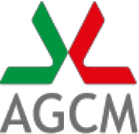DISTORTIONS TO COMPETITION ON THE TAXI SERVICE MARKET
PRESS RELEASE
PRESS RELEASE
THE COMPETITION AUTHORITY HAS REPORTED DISTORTIONS TO COMPETITION IN THE TAXI SERVICE
Exercising the powers vested in it by section 21 of law 287/90, the Competition Authority has submitted a report to the Speakers of the Senate and the Chamber of Deputies, the Prime Minister, the Minister for Regional Affairs, the Central-Regional Governments Conference, the Regional governments, and the National Association of Italian Municipalities, pointing out distortions to competition nationwide in the provision of taxi services.
The taxi service market is generally insufficiently open to competition at the local level leading to a partially unmet demand. Most of Italy's largest towns and cities have an inadequate taxi density in terms of the population.
Even though current legislation gives the municipal authorities powers to set the number of vehicles to be used as taxis, and hence to increase where necessary the number of licences issued where the offering is insufficient, there is strong resistance to the use of these powers from the taxi industry, which wishes to retain the ceilings on their numbers.
It should be noted that this can be put down to the fact that taxi drivers who are now working on the market had to pay a very high price to buy their licences from previous license-holders. For even though the licences were originally issued free of charge by the licensing authorities, in many cases they have been sold on at prices that have risen in real terms every time they change hands, which in itself reflects the fact that there are too few licences in circulation, or that the number of taxis currently in circulation is small.
This being so, the value of the taxi driver's license is an asset whose economic value is particularly high when the supplier of the service resells a license, while the issue of every new license necessarily reduces the value of those originally issued.
When defining possible solutions to open up the local taxi service market, the Authority therefore recognises the need to take account of these problems faced by taxi drivers who are opposed to a reform of the industry, by adopting measures which are accompanied by a sort of "compensation" for them.
In order to encourage a greater openness of the relevant markets, any steps accompanied by measures to compensate the existing license-holders would have the advantage of reducing the unfavourable effects on current license holders, while guaranteeing market entry to new taxi drivers and increasing the benefits to the general public, by offering them a broader taxi service. Increasing the number of licences would therefore appear likely to bring more benefits to consumers.
In order to gradually liberalise this sector, the Authority therefore intends to suggest a series of possible actions that the regulatory authorities might take.
A first type of measure, which would increase the number of licences, could be to introduce an auction system, after which the authorities could issue new licences to successful bidders against payment of a licence fee. The revenues from this procedure could be used to give a one-off compensation to existing license holders.
Another solution would be to give the authorities the possibility to increase the number of licences by issuing existing license-holders with a second license, free of charge. This measure would have the effect of compensating the existing license-holders for the loss in the financial value of their existing license. For taxi drivers could sell the new license, derive an income from it, or use both licences by assigning the new license to another driver. In order for this measure to be effective, the new license should be either assigned or used within an appropriate period of time, compatibly with the gradual liberalisation process.
However, this measure would have to be implemented in such a way that one and the same license holder must be able to hold several licences to run the taxi service, which is not the case under current legislation, and it would also have to be possible to be replaced as a taxi driver by anyone meeting the statutory requirements. Changes to the provisions of sections 8 and 10 of law 21 of 15 January 1992 could be requested by the authorities responsible for regulating the industry.
These proposals could gradually lead to a full liberalisation of the taxi industry, by creating a system of licences without quotas.
In addition to this, a number of collateral measures could be adopted to facilitate the matching of supply and demand for taxi services.
Part-time licences could be issued in order to make it possible to provide broader taxi service coverage at peak times, and to enable license holders to perform their activities outside the geographic area for which the licences were originally issued; licences could be granted to introduce an innovative taxi service, with fewer service obligations involved, along the lines of the London minicabs which can only take customers who telephone for their services, and who charge different fares from the taxis that pick up passengers on the street; alternative services could be encouraged to complement the traditional taxi service, such as taxi buses and the "collective taxi" service, broadening and diversifying the overall offering of these services for the benefit of the general public, and expanding the possibilities of obtaining urban transport services at decidedly lower prices.
Rome, 9 March 2004

